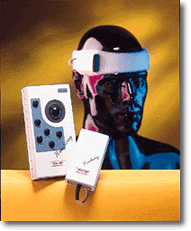-
Technology for inclusion
普通类 -
- 支持
- 批判
- 提问
- 解释
- 补充
- 删除
-
-
Introduction
HOW CAN WE USE TECHNOLOGY to improve the quality of life of individuals with special needs? How can we use technology not for the sake of technology itself but for what it can help learners do? Educators have been asking these questions for many years. Today the potential of technology to provide an accessible and motivating learning environment is greater than ever. This article examines how technology can be used to enable the inclusion of students with special needs in an inclusive school system.
-
Inclusive Schooling
In our days, one of the major theoretical movements for the education of students with special needs is inclusion. An inclusive school is "structured to serve a wide range of students; the environment is flexible and organized to meet he unique needs of all students. In an inclusive school, everyone belongs, is accepted, supports and is supported while having individual educational needs met". (Barnes & Lehr, 1993,p. 82)
Technology should adapt to these changes and facilitate inclusive practices. But to enable technology for inclusion we should ensure both access and engagement.-
Towards Inclusion: Access and Engagement
Access technology provides alternative or additional methods of communicating within the learning process to help students overcome the barriers to learning.
For example, to overcome physical barriers and ensure access to curriculum, technology provides special communication aids operated by switches, special keyboards, etc.
The headway headpointer is one of these assistive devices. With this the student controls the computer with head movements instead of the mouse. Students who can’t use their upper limbs can replace the mouse with the headway headpointer.
.jpg)
Technology also enables teachers to present the curriculum in different ways, so that students who have difficulties can participate in the learning process. For example, students can use a floor robot to develop spatial or other skills.
When using the robot students can program the robot to move to certain directions and can plan the route that the robot will follow. The kids in the picture are using Roamer, a floor robot, to learn the numbers on a number line.
Access technology is necessary, but not sufficient for inclusion. The degree of inclusion depends not only on access but also on the level of the engagement of the student in the learning process. To be fully included, the learner should have access to the appropriate technology and be actively involved in every learning and social activity of the classroom. Combining access technology and engagement inclusion is the result of the equation:
Roamer: An example of a floor robot
Roamer can move, flush lights or play music. Valiant Technology Ltd

-
Technology facilitates Inclusion
Based on this principle, Blamires (1999) suggests a model in which inclusion is concerned with access and engagement at a physical, social and cognitive level. Technology can be used as a mean to enable inclusion in all these three levels. Click on the buttons below to see examples (Blamires, 1999), in which technology facilitates each dimension of inclusion.
-
Conclusion
The creative and sensitive application of appropriate tecnology is a critical factor in enabling students with special needs to be included in schools and community. Inclusive Technology can provide physical support and can facilitate understanding and engagement with knowledge and people. To use technology effectively, we should ensure both access and engagement.
-
Author
Despina Soteriou, Graduate Student
Department of Educational Technology -
-
- 标签:
- robot
- special
- inclusion
- inclusive
- access
- engagement
- students
- learning
- technology
-
加入的知识群:



学习元评论 (0条)
聪明如你,不妨在这 发表你的看法与心得 ~